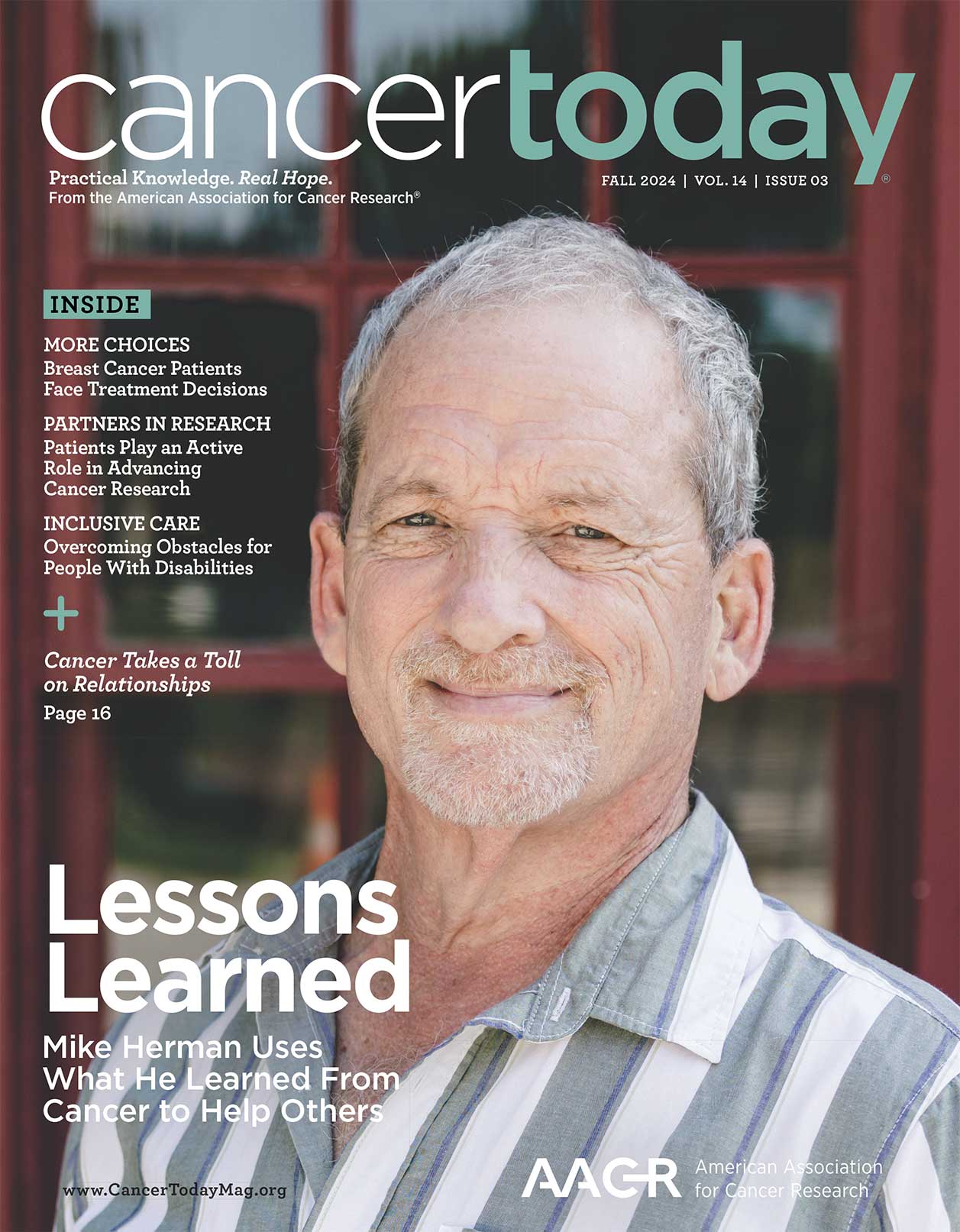Advances in Multiple Myeloma Care
Since the 1990s, advances in treatment, including the emergence of therapies that use the body’s immune system to kill cancer cells, have changed the prognosis and experience of the estimated 35,000 people who are diagnosed with multiple myeloma every year. A Washington Post report highlighted how, after a half century of treatment that relied on chemotherapy and steroids, new options have doubled median survival for people with multiple myeloma. The introduction of thalidomide in the 1990s was followed by proteasome inhibitors in 2003 then monoclonal antibodies in 2015. And since 2021, CAR T-cell therapy and bispecific antibody treatment have been approved for people who have relapsed multiple times, but researchers hope these approaches will prove effective for first-line treatment. “Thirty years ago, multiple myeloma was a death sentence,” myeloma survivor and founder of the Multiple Myeloma Research Foundation Kathy Giusti told the Post. “Today it’s one of the most treatable cancers out there. People are living longer lives with tremendous hope. I was supposed to live three years and I’ve lived almost 30.”
Drug Makers Are Abandoning Generics, Now the U.S. Faces Drug Shortages
Steep competition and slim profit margins have pushed multiple companies out of generic drug manufacturing. Now the U.S. is facing shortages of chemotherapy drugs, such as carboplatin and cisplatin. KFF Health News reports that the average net price of generic drugs fell by more than half between 2016 and 2022, leading some manufacturers into bankruptcy and others to pivot to more lucrative medicines. After an Intas Pharmaceutical plant in India that had been making half of the U.S supply of generic cisplatin and carboplatin shut down in late 2022 over quality concerns, there weren’t enough producers to make up the shortfall. Cisplatin and carboplatin are used to treat breast, cervical, ovarian, lung, testicular and other cancers. “All day, in between patients, we hold staff meetings trying to figure this out,” Bonny Moore, an oncologist in Fredericksburg, Virginia, told KFF Health News. “It’s the most nauseous I’ve ever felt. Our office stayed open during COVID; we never had to stop treating patients. We got them vaccinated, kept them safe, and now I can’t get them a $10 drug.”
Scientists Discover How Some Glioblastomas Hijack the Brain’s Ability to Form New Connections
Researchers identified a protein that helps encourage the creation of new synapses in the brain but can be hijacked by brain tumors to help cancer grow. Synapses are connections in the brain and the ability to form new ones is behind every function of the human mind, driving our ability to think, learn, create and remember, according to an article in Cancer Currents, a blog published by the National Cancer Institute. Glioblastomas, while rare, are the most common type of brain tumor and one of the deadliest, with people on average living just over a year after diagnosis. The study published May 18 in Nature found that the TSP-1 protein, which encourages the formation of new synapses, can also be expressed by some glioblastomas, causing new growth that looks like a synapse but doesn’t function like one. Looking at glioblastoma samples taken from people treated with surgery, the researchers noted that people with many such connections around the tumor had more trouble with language, a sign of worse cognitive functioning, and lived a year less than people whose tumors did not have these connections. But if these findings are confirmed, the researchers hope they can lead to new treatments that extend life and preserve cognitive function. Gabapentin, for instance, has been shown to block the activity of this protein and, in mice, has slowed the growth of glioblastomas.
Cancer Today magazine is free to cancer patients, survivors and caregivers who live in the U.S. Subscribe here to receive four issues per year.





